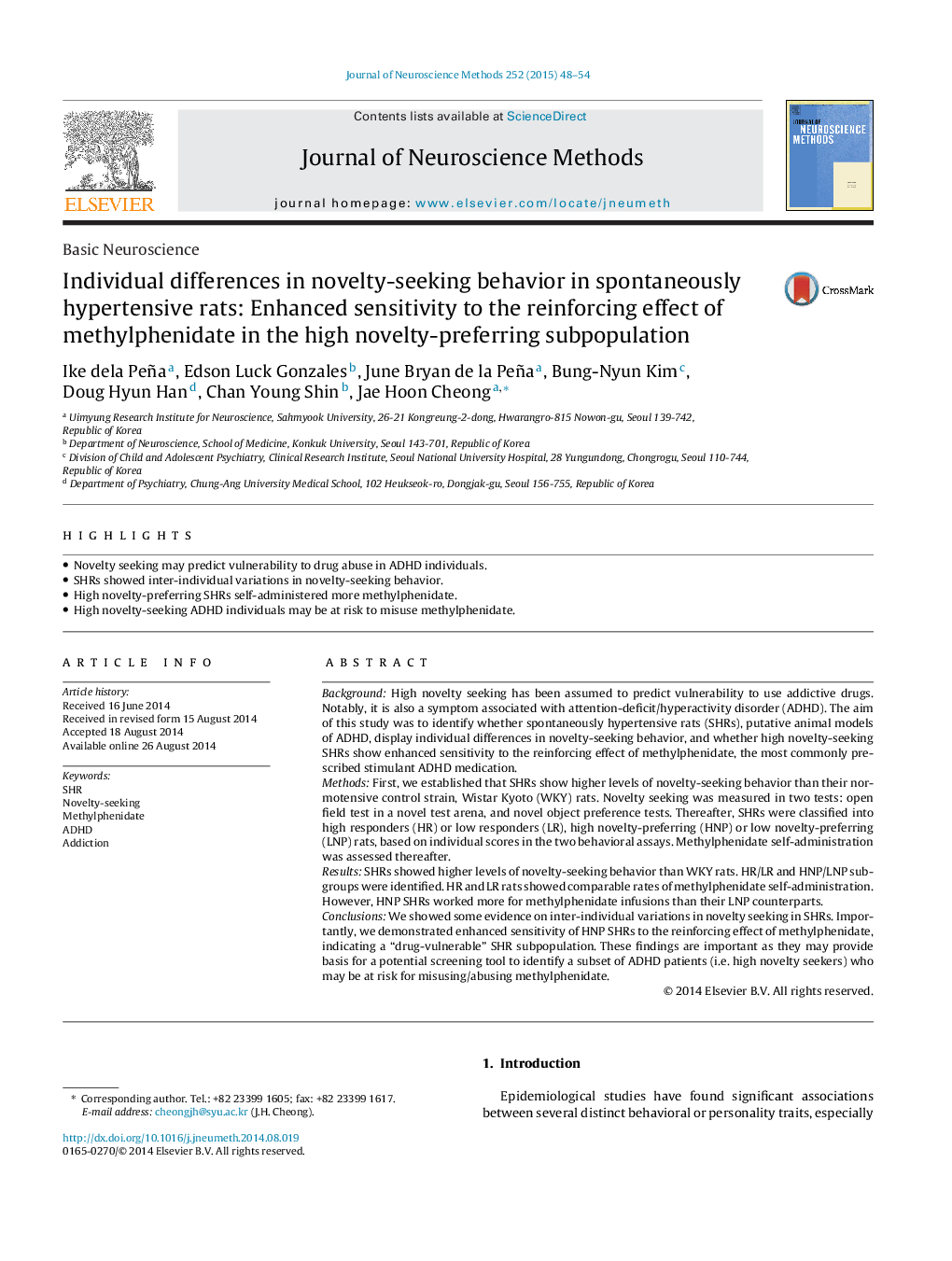| Article ID | Journal | Published Year | Pages | File Type |
|---|---|---|---|---|
| 4334905 | Journal of Neuroscience Methods | 2015 | 7 Pages |
•Novelty seeking may predict vulnerability to drug abuse in ADHD individuals.•SHRs showed inter-individual variations in novelty-seeking behavior.•High novelty-preferring SHRs self-administered more methylphenidate.•High novelty-seeking ADHD individuals may be at risk to misuse methylphenidate.
BackgroundHigh novelty seeking has been assumed to predict vulnerability to use addictive drugs. Notably, it is also a symptom associated with attention-deficit/hyperactivity disorder (ADHD). The aim of this study was to identify whether spontaneously hypertensive rats (SHRs), putative animal models of ADHD, display individual differences in novelty-seeking behavior, and whether high novelty-seeking SHRs show enhanced sensitivity to the reinforcing effect of methylphenidate, the most commonly prescribed stimulant ADHD medication.MethodsFirst, we established that SHRs show higher levels of novelty-seeking behavior than their normotensive control strain, Wistar Kyoto (WKY) rats. Novelty seeking was measured in two tests: open field test in a novel test arena, and novel object preference tests. Thereafter, SHRs were classified into high responders (HR) or low responders (LR), high novelty-preferring (HNP) or low novelty-preferring (LNP) rats, based on individual scores in the two behavioral assays. Methylphenidate self-administration was assessed thereafter.ResultsSHRs showed higher levels of novelty-seeking behavior than WKY rats. HR/LR and HNP/LNP subgroups were identified. HR and LR rats showed comparable rates of methylphenidate self-administration. However, HNP SHRs worked more for methylphenidate infusions than their LNP counterparts.ConclusionsWe showed some evidence on inter-individual variations in novelty seeking in SHRs. Importantly, we demonstrated enhanced sensitivity of HNP SHRs to the reinforcing effect of methylphenidate, indicating a “drug-vulnerable” SHR subpopulation. These findings are important as they may provide basis for a potential screening tool to identify a subset of ADHD patients (i.e. high novelty seekers) who may be at risk for misusing/abusing methylphenidate.
